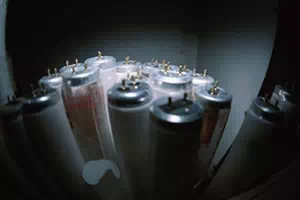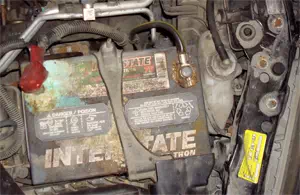EPA clarifies the regulatory of spent lithium batteries.
Waste Import Export Tracking System. EPA transitioned to a new system for processing hazardous waste export and import notices on January 18th, 2022, called RCRAInfo WIETS (Waste Import Export Tracking System).
Effective January 1, 2021, new Basel Convention regulations effect transboundary shipments of plastic scrap and waste.
In May 2019, 187 countries decided to significantly restrict international trade in plastic scrap (recyclables) and waste to help address the improper disposal of plastic waste and reduce its leakage into the environment. As a result of these changes, transboundary shipments of most plastic scrap and waste are controlled, or regulated, for the first time under a treaty called the Basel Convention on the Control of Transboundary Movements of Hazardous Wastes and their Disposal, effective January 1, 2021.
|
 |
Hazardous waste shipments, including Universal waste shipments,
destined for recovery in Organization
for Economic Cooperation and Development (OECD) member
countries (see list in 40
CFR 262.58(a)(1)) are regulated under 40
CFR 262 Subpart H. Subpart H requires notification for hazardous
waste shipments, tracking documents, and recordkeeping and reporting.
These requirements insure that all parties involved in the transaction
are notified that the shipment will occur and are cognizant of
the type of wastes shipped.
Universal waste shipments and hazardous waste shipments destined
for recovery in non-Organization for
Economic Cooperation and Development (OECD) member countries
must follow the basic requirements for hazardous waste.
The
OECD Council agreement provides a tiered level of control for
transboundary
movements of hazardous waste. This agreement
specifies three categories of waste: green, amber, and red. The
green list includes wastes that pose the least hazard to human
health and the environment and are subject to the same level
of control as normal transboundary commercial shipments. Most
RCRA hazardous wastes are amber and red list wastes, which are
more hazardous and are subject to more stringent requirements. EPA
incorporates the green, amber, and red lists of waste by reference
in 40 CFR 262.89.
Universal wastes are specific, widely generated hazardous wastes
and include batteries, pesticides, lamps, thermostats and mercury-containing
equipment (MCE). Under certain state rules, antifreeze or cathode
tube rays may also be considered universal waste.
Universal wastes, if not recycled, exhibit characteristics of
hazardous materials and must be managed as hazardous wastes (see Hazardous
Waste). However, since universal wastes are commonly
used products, the U.S. Environmental Protection Agency (EPA)
has determined that these wastes can be more effectively managed
under "streamlined" management rules that subject universal
waste handlers to less stringent standards for storing, transporting,
and collecting the wastes. For example, when certain rules are
met, universal wastes can be transported and disposed of domestically
without a manifest. Universal waste regulations are found at 40
CFR part 273.
These
rules are outlined below. A more
complete explanation is found on the EPA web site.
Imports of Universal Waste to OECD Countries
Specific procedures must be followed to import hazardous waste
from an OECD country for recovery within the United States:
- Contracts: U.S. recovery facilities that receive
hazardous waste shipments from an OECD country must establish
a contract with the foreign notifier. The contract must
specify the name and the EPA ID number (where available) of
the generator of the waste, each person that will have physical
custody of the waste, each person that will have legal control
of the wastes, and the recovery facility. The contract
must also designate the party or person that will assume responsibility
for adequate management of the waste and if necessary, for
alternate management of the waste.
- Notification: Four weeks prior to receiving hazardous waste from a foreign destination, the U.S. recovery facility (i.e., a treatment, storage, or disposal facility) must notify the EPA Regional Administrator using. This requirement allows EPA to effectively oversee the transportation and management of hazardous waste imported to the U.S.
- Tracking Document: Transboundary shipments of hazardous
waste must be accompanied by a tracking document. The
tracking document includes information on the date the shipment
commenced, the name of the notifier, recovery facility, and
all transporters, and a certification statement (262.84). All
U.S. parties that manage the hazardous waste shipment (transporters,
consignee, and recovery facility owner) must sign this tracking
document.
Exports of Universal Waste to OECD Countries
| Exports of spent lead-acid batteries (SLABs) from the United States for recovery will be prohibited on or after July 7, 2010, unless the exporter has submitted a notification and obtained consent from EPA and the receiving country. More ... |
 |
Specific procedures must be followed to export hazardous waste from the US to an OECD country for recovery:
- Notification Green-List Wastes: Green-list
wastes are subject only to the requirements for normal commercial
shipments.
- Notification Amber-List Wastes: Amber-list wastes
may be pre-approved for import/export. When an importing
country wishes to employ this process, it must inform the OECD
Secretariat of the recovery facility's name and address, technologies
employed, waste types to which the pre-approval applies, the
time period covered, and specific revocations (40 CFR 262.83(b)). No
specific consent is required from the importing country when
waste is to be sent to a facility pre-approved to accept that
waste.
- Notification Red-List Wastes: For red list waste
shipments, U.S. notifiers must notify EPA 45 days in advance
of the shipment. The notifier must include the same information
that is submitted for amber-list shipments.
- Manifest: Notifiers
must comply with the manifesting requirements (Part
262, Subpart B) and the special manifest provisions for
primary exporters in 40 CFR 262.54.
- Tracking Document: The
tracking document must include all of the information required
on the notification.
- Reporting: Persons who meet the definition of primary
exporter (the person who is required to initiate the manifest)
must file an annual report with OECA by March 1 of each year. This
report summarizes the type, quantity, frequency, and ultimate
destination of all hazardous waste exported during the previous
calendar year (40 CFR 262.87).
Starting on December 31, 2017, all U.S. exporters of manifested hazardous waste, universal waste, and spent lead-acid batteries for recycling or disposal, and all exporters of cathode ray tubes for recycling will be required to file EPA information in the Automated Export System (AES) or AESDirect for each export shipment. The AES resides in the U.S. Customs and Border Protection’s (CPB's) Automated Commercial Environment (ACE). Paper processes will no longer be allowed on or after the compliance date. View more information on the Compliance Date for Automated Export System (AES) Filing.
Exports of Universal Waste from the
U.S. to Foreign
Destination Other than OECD Countries
A small or large quantity handler of universal waste who sends
universal waste to a foreign destination other than to those
OECD countries specified in 40 CFR 262.58(a)(1) (in which case
the handler is subject to the requirements of 40
CFR part 262, subpart H) must:
- Comply with the requirements applicable to a primary exporter
in 40
CFR 262.53, 40 CFR 262.56(a) (1)
through (4), (6), and (b) and 40 CFR 262.57;
- Export such universal waste only upon consent of the receiving
country and in conformance with the EPA Acknowledgement of
Consent as defined in 40
CFR 262 Subpart E; and
- Provide a copy of the EPA Acknowledgment of Consent for the
shipment to the transporter transporting the shipment for export.
Imports of Universal Waste from to
Foreign Destination
Other than OECD Countries to the U.S.
Persons managing universal waste that is imported from a foreign
country into the United States are subject to the applicable
requirements of this part, immediately after the waste enters
the United States, as indicated in paragraphs (a) through (c)
of this section:
- A universal waste transporter is subject to the universal
waste transporter requirements of 40
CFR 273 subpart D.
- A universal waste handler is subject to the small or large
quantity handler of universal waste requirements of 40
CFR 273 subparts B (Small Quantity Handler) or 40
CFR 273 subparts C (Large Quantity Handler), as applicable.
- An owner or operator of a destination facility is subject
to the destination facility requirements of 40
CFR 273 subpart E.
|
